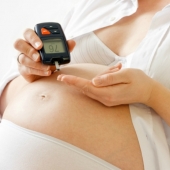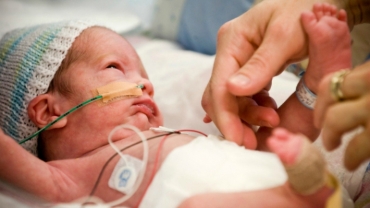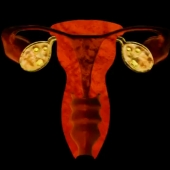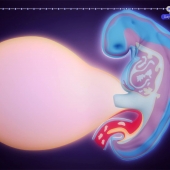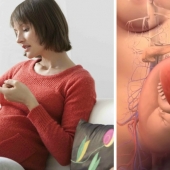Your due date is calculated from the first day of your last menstrual period. Conception occurs about two weeks from this day, and that's when you're truly considered to be pregnant.
During a menstrual cycle, one of your two ovaries matures an egg within a follicle. Hormonal surges controlled by your brain then cause one and occasionally two follicles to release an egg. If both ovaries release an egg, you may have non-identical twins, also known as fraternal twins.
Long, fingerlike projections sweep the egg into the fallopian tube. The egg travels down the fallopian tube, pushed by tiny hairs and awaits the arrival or sperm. About a teaspoon worth of semen enters the vagina containing roughly 300 million sperm, less than 100,000 will pass into the cervix to begin their 6-inch journey to the egg.
A long, whiplike tail propels each sperm toward the waiting egg. Most sperm will lose their way. Only about 200 sperms successfully reach the egg. Fertilization occurs when one sperm penetrates the egg, combining their genetic material.
The sperm and egg, each contain 23 chromosomes holding all of the information that determines your child's sex and contributes to the child's genetic make up, including physical appearance, intelligence, and personality. It's a boy or a girl; you just don't know which yet.
Within 24 hours of fertilization, the egg, now called a zygote, divides into two cells. The number of cells doubles about every twelve hours as the zygote continues its trek to the uterus. During this early stage, if the cells split into two-separate groups, instead of remaining attached, you'll be doubly blast with identical twins.
About three days after fertilization, the zygote has become a ball of 32 cells resembling a miniature raspberry. A few days later, it reaches the uterus as a ball of roughly 500 cells surrounding a fluid field cavity. On day 7, the ball of cells burrows into uterine wall during a process called implantation.
Many women have implantation bleeding or spotting at this time which occurs about 21 days after a period, before a pregnancy test could even be positive. The cells on the outside of the ball create the yolk sac and the placenta, which nourishes your developing baby. By 38 weeks, the fertilized egg has grown into an infant with more than 2 trillion cells.
- 389 views

